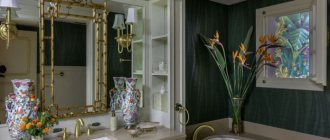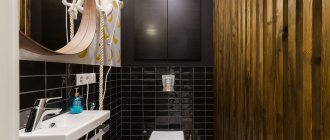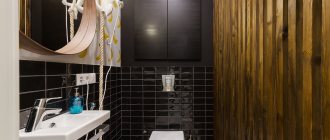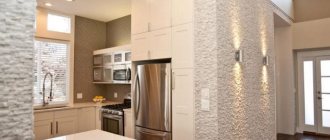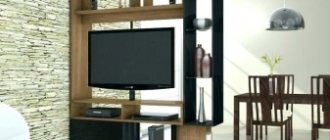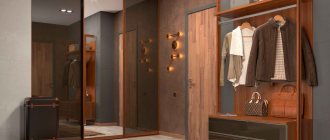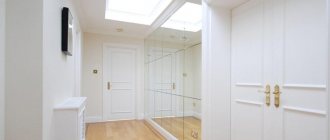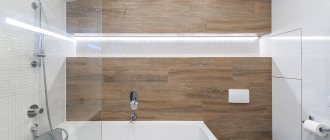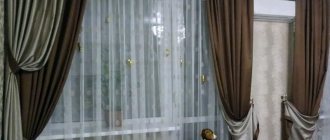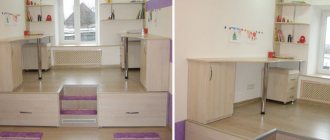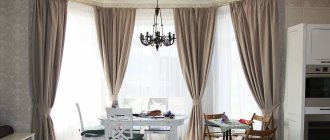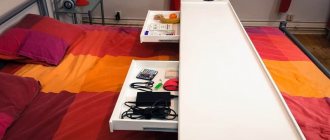Home » Decor » Accessories
AccessoriesDesign
Alyona
11847 Views
A mirror in an apartment expands the space, transforms rooms, and allows you to realize your wildest fantasies. The mirror becomes the final detail when creating an interior. If it is installed incorrectly, then the surface will narrow the corridors and cause discomfort for the owners.
Recommendations for selection and placement according to Feng Shui
Tips for selection and placement:
- According to Feng Shui, it is not desirable to place mirrors opposite the sleeping and working places. Also, you should not place or hang products in front of a window or door, as this may contribute to incorrect reflection of the energy flow.
- In the kitchen or dining room, it would be correct to place a reflective surface opposite the dining table.
- It is believed that in an apartment or house there should be at least one large mirror model with a full-length reflection.
What to look for when choosing a mirror for the kitchen?
For the kitchen, you should buy only the highest quality and durable products that are not afraid of heat, humidity and detergents. For example, cheap mirrors and polystyrene foam films quickly deteriorate and get scratched. Classic thin coatings based on glass are considered too fragile; it is even better to abandon them in favor of triplex - multilayer materials based on polymers.
If the mirror will be located far from the work area, for example at the top of the room, it can be acrylic. Such products are easy to install and maintain, lightweight and inexpensive.
Mirrorplex plexiglass 2 mm
Mirror acrylic is used to make tiles (tiles in the shape of a square, circle, hexagon), mosaics (small elements 2x2 cm or 3x3 cm), and sheet metal panels. To decorate large areas, you should choose wide-format material of sufficient thickness (6-7 mm).
Important! It is not recommended to purchase frameless mirrors for the kitchen - they will be vulnerable to chips and cracks.
Models with shiny edges, beveled edges and beveled corners look more beautiful. The design of mirrors can also be varied:
- Satin finish. Chemical etching creates a matte effect on the glass.
- Color. Instead of the traditional one, you can choose a colored product, the base of which is painted in the selected shade.
- With aging effect. Typically, such models are used in retro interiors. Their surface is treated with special substances that make it opaque, with cracks and defects.
- With drawings. Using sandblasting, various designs, ornaments, and designs are applied to mirrors. Frosty and floral images are considered quite popular decorations.
- Amalgam decoration. The glass surface is partially destroyed using special machines, and colored pigments are applied. The product becomes, so to speak, velvety in appearance, with visible mirror motifs.
Mirror tiles with bevel
Types of mirrors
There are several types of mirror products.
Floor
These models are not only an excellent decoration element that attracts all attention, but also provide an excellent full-length reflection. Floor mirror structures with legs are considered the most practical and popular, as they are the most comfortable and stable.
The photo shows a floor mirror in a wide black frame in the bedroom.
Mounted
Fashionable, stylish, popular and with many undeniable advantages, wall-mounted models competently level out planning flaws and minor wall defects. Such mirrors occupy a minimum of usable space, which allows them to be used even in small rooms.
Built-in
Types of built-in mirrors:
- In furniture. Properly placed furniture with a built-in reflective surface will reflect artificial or natural light flux, thereby giving the room additional light and a certain visual lightness.
- Into the wall. This option is particularly logical and ergonomic.
The photo shows a small children's room with mirrors built into the wardrobe.
Bedroom extension
Although it is not recommended to place a mirror in the rest room, in some cases you cannot do without it. To understand how to expand the bedroom interior with a mirror and not make a mistake, you need to consider its configuration, furniture placement, and room size.
The mirror is installed in the bedroom in a place where the bed is not reflected.
In a narrow bedroom, it is advisable to install the bed close to the wall of one of the sidewalls, if it is not possible to do this with the headboard. And behind the bed there is already a mirror on the wall. In small rooms, it is better to abandon floor-mounted A-shaped mirrors in order to save space. For ergonomics, it is recommended to place them on the wall, on built-in cabinets.
Mirror placement options
The most popular accommodation options are:
- Ceiling. A mirrored ceiling surface allows you to completely change the geometry of the room, deprive it of spatial boundaries, bring in light and air and create a special mysterious atmosphere.
- Wall. Wall placement will give the room the missing depth, adjust its proportions and significantly save space.
- Doors. A door leaf with a mirror is considered a fairly successful design solution, allowing you to set the ceremonial mood of the room.
- Furniture. Various pieces of furniture with built-in mirrors are perfect for those who want to decorate the interior with a large mirror model and at the same time save useful space in a small room.
The appearance of the entire space and the interior as a whole will depend on the correct location.
Installation of the canvas
For installation in the interior, designers suggest, based on practical experience:
- To visually enlarge the space, hang it opposite the window;
- Mirror panels in a bright room with high ceilings increase its illumination and make the atmosphere light and cozy;
- To give a narrow room a square shape, horizontal mirrors are hung along the length of the wall. Vertical sheets are used to raise the ceiling;
- The reflection of large, massive objects will create an interior overloaded with furniture. Too small objects in the reflection of the mirror will make the room look chaotic;
- Try to keep light, light ensembles with beautiful patterns, transparent surfaces with holes in your field of view;
- You should not place mirrors one opposite the other, as you risk attracting negative energy;
- To correctly perceive and create a comfortable environment, accurate measurements, a clear shape of the canvas and successful placement in the room are necessary.
Shapes and sizes of mirrors
Variants of shapes and sizes of reflective models.
Round
The rounded shape visually softens the angularity of the room and becomes its main accent, giving the space charm, high decorativeness and maximum comfort.
Oval
It fits perfectly into the decor and harmonizes perfectly with all interior elements, without causing a feeling of dissonance.
The photo shows a shabby chic bathroom with an oval mirror decorated with stucco.
Rectangular
Depending on the horizontal or vertical arrangement, rectangular products can not only give the room a more elegant look, but also visually raise the ceiling or significantly contribute to the expansion of space.
Big
Panoramic models placed on the entire wall will give the room a certain perspective and will certainly transform its appearance, and due to the abundance of reflected things, they will make the atmosphere much more comfortable.
Curly
With the help of such decor, it is possible to go beyond ordinary and standard design rules and thereby transform the space beyond recognition.
Honeycomb
When joined, hexagons form an original, stylish and aesthetic panel that adds special dynamism to the interior.
Semicircular
The curved, streamlined semicircular shape, with soft and graceful lines, will be an ideal decorative solution that will create a solid and monolithic design.
Production Features
In our workshop, we carry out full-fledged production of colored mirrors using the appropriate shade of sputtering: titanium - gives a gray-metallic image, titanium oxide - a sky-blue image, titanium nitride - a golden image. Traditionally, 2 popular methods are used in the production of decorative mirrors:
- The smooth surface of transparent glass of the “M1” brand is subjected to silver coating, to which a dye of a certain color is added;
- Transformation (tinting) of glass by silver plating, copper composition with priming and painting at the final stage of production.
Design and decor of mirrors in apartment decoration
Original ideas for the design and decoration of mirror products.
Without frame
Despite the fact that without a frame the canvases look too simple and empty, they do not create discomfort in the room, but rather fill it with notes of novelty and a certain futurism.
Aged
These antique reflective surfaces, due to their special luxury and visibility, individualize the interior and impart mystery to the atmosphere.
Faceted
Historical reference
The first archaeological finds of similar mirrors date back to the Bronze Age. Then they were made of tin, gold or platinum, so they were a luxury item available only to very wealthy people. In the modern understanding, humanity learned about a mirror - the way we are used to seeing it - in the 13th century, when Europe learned how to blow glass. Over such a long period of existence, the mirror has acquired many myths and superstitions.
The ancient Greeks believed that Aphrodite emerged from the foam of the sea off the coast of Cyprus. The traditional attribute of this goddess is a mirror. It was in Ancient Greece that a large deposit of copper was discovered, Cyprus became the “copper” center of the entire Mediterranean, and mirrors were made from this metal at that time. This is how an image appeared called the “Mirror of Venus” (Aphrodite), understood throughout the world and denoting the female gender, the chemical element copper and the planet Venus.
In many cultures, the mirror has become an integral attribute of characters associated with beauty and mystical power.
Drawings and engravings on the surface
With the help of beautiful lines and multivariate patterns, it is possible to decorate the canvas in a truly original way.
- Diamonds. They create unusual effects in the room and, due to the refraction of light, give it a completely new image.
- Squares. Many edges add visual volume and luxurious diamond shine to the reflective surface.
- Free drawing. Easily transforms a mirror and makes it a truly highly artistic piece of furniture.
Manufacturing process
First, we need to acquire all the related materials and tools. Therefore we will need:
- Plastic baguette profile
- Rulers
- Hacksaw
- Wooden baguette
- Fast drying adhesive solution
- Glue gun
- Staple gun
- Finishing varnish
Making your own baguette
The first step is to measure the mirror, which we need to frame with our own hands. Do not forget about the accuracy of your measurements, because even the slightest deviations can ruin the weight process. Pay attention to plastic elements - they are much cheaper and just as durable.
The most critical process is cutting the material. All parts are cut at an exact angle of 45%, which is what makes it possible to perfectly fit all the elements in the future. If you use a guillotine, the cutting will be as accurate as possible, since two corners are processed at once. After cutting, we need to fasten all the parts of our baguette and the future frame for the mirror. A stitching gun will help connect all the parts using staples that will remain invisible and will not spoil the overall appearance of the frame.
The baguettes are glued using a glue gun; it will also help secure the canvas to the frame.
Photos in the interior of the rooms
Photo examples of the design of different rooms.
Bedroom
see also
Photo of mirrors in the bedroom
Well-thought-out design and placement of the canvas allows you not only to visually enlarge the bedroom, but also to give it a special solemnity, presenting the interior design in a completely new way.
Kitchen
see also
Photo of mirrors in the kitchen
A mirror will give the kitchen atmosphere a good mood and fill it with additional light.
Living room
What material is better for kitchen mirror design?
Mirror designs can be made from glass, acrylic and polystyrene. It is better not to use the latter in the kitchen, as it is afraid of moisture and is not resistant to mechanical damage. Therefore, let’s take a closer look at the other two options.
Acrylic. These mirrors are highly durable and are considered the safest. Additional benefits include ease of installation, transport and cutting. Disadvantages include high cost and susceptibility to scratches.
Glass. Such patterns are heavier than acrylic and are used for finishing backsplashes and walls.
Based on such designs, the following elements are produced:
- mosaic slab - used for cladding walls, aprons and some elements. This type of finishing has many advantages: the invisibility of streaks and halos, the possibility of a uniform base, the possibility of local repairs and an effective aesthetic component. Disadvantages include the high price and the need for periodic cleaning of the seams;
- sheet metal panels - usually used for finishing walls, aprons, and furniture facades. Their thickness ranges from 4-6 mm;
- tiles - can be of various shapes (squares, triangles, hexagons, etc.) and sizes.
Interior styles
Mirror models in the design of various styles.
Loft
Square, round, rectangular mirrors or canvases of other shapes with different sizes, decorated with wooden, metal frames or laconic iron baguettes, painted in non-trivial colors, will perfectly emphasize the brutality and stylishness of the loft.
The photo shows a narrow floor mirror in a thin black frame in a loft-style bedroom.
Classic
For this luxurious interior, rectangular and triple symmetrical canvases in gilded, silver or bronze baguettes, faceted models or products decorated with stucco would be appropriate. This decor will be the ideal finishing detail of a classic style.
Provence
The overall picture of the French style will be perfectly complemented by vintage reflective surfaces, in patterned frames with the effect of artificial aging and scuffs, products decorated with forged elements and floral paintings, or mirrors with frames that match the natural color scheme of the interior.
Scandinavian
Nordic design embodies beauty, lightness and simplicity, so excessive luxury and provocative accents are not appropriate here. An excellent solution for a cold, but at the same time very cozy Scandi interior would be round, rectangular, square mirrors, tinted canvases or hanging models with a minimalist design.
The photo shows a spacious Scandinavian-style living room with a round mirror located above the sofa.
Modern
In the aristocratic and creative modern style, a large number of reflective models, decorated in ornate frames or curved, wavy, figured and arched mirrors, which will become an integral decor of this slightly asymmetrical design, are especially welcome.
Baroque
Here, large or oval mirrors are often used in massive frames, decorated with stucco, carvings, gilding or complex patterns with mythological or plant motifs.
Modern
Models with the simplest and most uncluttered metal, plastic, wooden frame or chrome elements, in any color range, will favorably emphasize the simple and practical interior elements of the modern trend.
The photo shows a floor mirror with a laconic beige frame in a modern-style bedroom.
Oriental
A mirror is a very important accessory that shapes the style features of oriental design. Rectangular, oval, shaped or arched products in wooden, openwork metal or bone-inlaid frames will significantly change the appearance of the room, add subtle notes to it and will be fully consistent with this direction.
Art Deco
This style involves a peculiar play of images; mirrors with unusual geometry, in brass, copper or gold frames, would be appropriate here. The hallmark of Art Deco is the mirror model in the shape of the sun.
Eco style
Natural motifs and environmental themes of eco-design, which is currently quite popular, will perfectly complement round, rectangular canvases in wooden, bamboo and jute frames or products with an interesting streamlined shape, framed with natural materials.
Minimalism
To add even more aesthetics, practicality and harmony to a minimalist interior, mirrors decorated in simple and laconic ways, such as plastic frames or frameless canvases, will help.
Choosing a floor mirror
The most practical is a floor mirror. It is located directly on the floor and must be framed with a frame with straight, even edges for stability, or it is inserted into a stand on legs made of metal.
They are convenient because they can easily be turned in any direction at any angle, are human-sized, and present the beholder’s appearance in a complete way. Small details of clothing, front and back views, and general proportions are clearly visible.
Photos of mirrors in beautiful frames
Photo of original framing options.
Wooden
A wooden frame is a universal solution that fits harmoniously into any interior. There are many different decoration options, such as artificial aging or carving, which will add special luxury and sophistication to the frame.
Metal
Forged elegant frames in the form of curls or floral patterns are distinguished not only by their high strength, reliability and durability, but also instantly transform the atmosphere, giving it elegance and aristocracy.
Baguette
Baguettes with different artistic styles allow you to create a truly attractive frame that will look advantageous in any setting.
The photo shows a square mirror decorated with a baguette in the interior of the bathroom.
Soft frame
Thanks to various color and design solutions, a soft fabric or leather frame adds special luxury to the room and makes the atmosphere more sophisticated and refined.
Decorative frames
Let's complicate the task: a wooden frame
Making wooden frames for mirrors yourself is the most difficult thing, since working with wood requires a large number of special tools. In addition, for mirror sheets with a large area, it is important to create protection against possible damage, which also implies a special technology. Therefore, if you do not have the necessary skills, it is recommended to start experiments with frames for small mirrors - wall or tabletop.
The easiest way, of course, is to use the same blank as in the case of the ceiling plinth - door trim. For a large mirror, this is an ideal frame that only needs to be sanded and coated with paint and varnish, carefully drying each layer. For smaller ones, you can purchase thin wooden profiles, which are available in any framing workshop or hobby goods store. The dimensions are selected so that the resulting “window” inside is at least 2 cm smaller than the perimeter of the mirror itself.
By analogy with the ceiling plinth, the wooden profiles along the outer edges are cut at an angle of 45 degrees, so that all 4 parts can later be combined into a rectangle. The cut areas are sanded, after which they need to be connected and fixed. This is done either through corner clamps or through a rubber band. For small mirrors that have almost no weight, you can use a glue gun. At the end, all that remains is to sand the entire frame with sandpaper and decorate it to your taste: varnish, paint, add painting or other decorative elements.
And today we want to tell you how to make a frame for a mirror
made of solid wood and reveal the secret of an interesting aging mixture that can transform this frame in a very original way. In order to make this frame you do not need to have many complex tools or unprecedented training in carpentry. Everything is done as simply as in the first two cases; it’s up to you to decide which path is easier to take.
Materials:
- large frameless mirror;
- vinegar;
- Black tea;
- brush;
- sandpaper;
- L shaped corners;
- glue;
- screws;
- saw.
